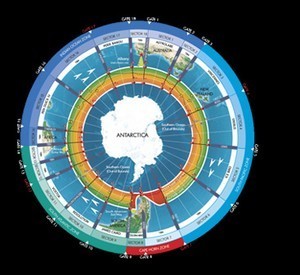Antarctica Cup Yacht Race
by Antarctica Cup Yacht Race media on 16 Aug 2007

Antartica Cup Course SW
Albany, Western Australia, has been selected as the start and finish port for the Antarctica Cup Yacht Race. The historic port, 150 nautical miles east of Cape Leeuwin, sits on the very edge of the ‘Roaring Forty’ latitudes and provides crews with a natural springboard to attack the challenging 360° race track around Antarctica.
The event has weathered five years of perseverance to arrive on the doorstep of realisation this coming Southern summer with the first entry expected to set out around the course in December.
Albany, a former whaling station, is one of the oldest ports in Australia. Site of the initial European settlement in Western Australia, it became the first safe port beyond Cape Town for sailing ships bound for Sydney, Melbourne, Hobart and New Zealand. The advent of steamship traffic during the 1850's expanded port activities with a coal bunkering service and the first rail link to the State's Capital, Perth, to speed up the increasing trade in mail, goods and people rushing to the rich Kalgoorlie goldfields.
King George Sound, the gateway into Princess Royal Harbour where the City is located, rivals Sydney Harbour as one of the most beautiful waterways in Australia. The deep-water harbour is the regional centre of the Great Southern region, and a regular port of call for cruise ships. The Princess Royal Sailing Club, which celebrates its Centenary in 2009 and has hosted the ‘Albany Race’ from Fremantle around Cape Leeuwin for the past 40 years, will also host the Antarctica Cup racers and attendant spectator fleet.
Nine hectares of city foreshore at Princess Royal Harbour has been earmarked for redevelopment. Importantly, the AU$100m plan includes a new deep-water marina which will make this Southern City one of the most progressive in Australia, attracting visitors not only for sailing, but to the region’s famous wine growing area and the famed Stirling Range National Park
The ‘Roaring Forty’ and ‘Furious Fifty’ latitudes provide the pinnacle conditions that all ocean racing sailors aspire to compete in at some point in their lives, and with 18 ‘gates’ including Cape Horn within the racetrack, all named after famous explorers in the region, the world at large will be able to follow every mile of this down-wind sleigh ride around the Southern ice via TV and the Web.
Bob Williams, chairman of the organisation behind the Antarctica Cup Yacht Race, is creating an ocean racing business based around Albany and the Antarctica Cup Racetrack.
'Our intensive study of the weather patterns around Australia’s southern region underlines Albany as the best port to start and finish the Antarctica Cup Yacht Race and access the 14,600 mile Antarctica Cup Racetrack. The Westerly winds here are consistently in the 10-20knot region during
December and February, giving crews the sling-shot they need to get down to the ‘Roaring Forty’ latitudes and back again.' Williams confirmed, adding. 'We are very impressed with plans to redevelop Albany’s waterfront, particularly the new marina, which will be deep enough to host the largest superyachts.
The South West region of Western Australia is a major international tourist area and we are confident that with this new investment, the Antarctica Cup Yacht Race event will attract sustainable ongoing interest in the years ahead leading to organised fleet races and class events on the Racetrack. The course is also very sustainable taking only 40-60 days to complete, compared to 70-100 days for non-stop round the world circumnavigations.'
Jack Spaanderman, Commodore of the Princess Royal Sailing Club, is equally pleased with the choice of port. He said today: 'On behalf of the members of the Princess Royal Sailing Club I warmly welcome your decision on choosing Albany as the host port for the inaugural Antarctica Cup Yacht Race.
The Port of Albany has a long history of being a chosen port of call for mariners of the Southern seas as a safe haven from the perils of the Southern Indian Ocean since it was first discovered by Europeans by the Dutch captain Pieter Nuyts in 1627 and most recently during last year’s Volvo Ocean Race. We look forward to working with the Antarctica Cup Management and your first competitor, to ensure that this inaugural attempt runs as smoothly as possible.
If you want to link to this article then please use this URL: www.sail-world.com/36654